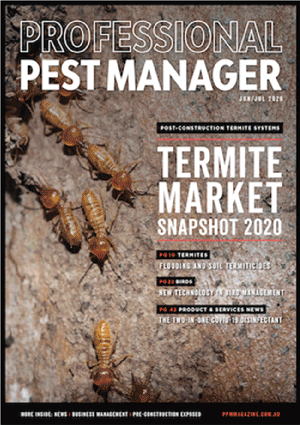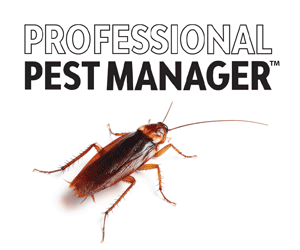How can pest managers tackle dust mites without chemicals? Research highlights the best measures to take for success, including the most efficient vacuuming method.
Although some products are specifically labelled for dust mite control, long-term dust mite management is more about using non-chemical control methods. Cultural control (making the environment undesirable to pests) and physical control (such as vacuuming) are two effective methods for successfully managing dust mites.
Dust mites, such as the house dust mite Dermatophagoides pteronyssinus, thrive in humid environments. Typically, their populations increase from spring to summer and decrease into autumn in line with changes in humidity. Trials have demonstrated that if relative humidity is kept below 50%, dust mite levels and allergens can reduce to insignificant levels. However, it also appears dust mites can be quite robust in that they can survive periods of low levels of humidity, as long as they get a few hours at higher humidity each day. So, low humidity levels need to be maintained to eradicate dust mite problems.
Getting rid of dust mites on bedding and clothes can be achieved through washing at warm to hot temperatures. Specifically, dust mites have a high survival rate in warm washes of 35-40°C, but when washed in temperatures over 50°C, dust mite mortality reaches 100%. A wash in water over 55°C for at least 30 minutes is recommended. Vacuuming and steam cleaning are good options for mattresses.
Although there is a general acceptance that dust mites are ‘everywhere’, that’s not necessarily the case. High populations of dust mites are certainly more common in the more humid coastal areas. But how do dust mites get into homes?
Researchers looked at three obvious routes of dust mite transfer: being transferred on clothes, being picked up from car seats, or introduced on pets. Of 144 homes with dust mite densities >100 mites/g of dust, 77% had significant dust mite populations on their car seats, but were only found on around 12% of clothing. However, this is possible due to the fact that clothes are generally washed regularly. In houses where new carpet was laid or new furniture was introduced, dust mites were found to populate the new furnishings within a month. There was no correlation between dust mite levels in homes and the presence of pets.
The key takeaway is to make sure that car seats, especially fabric car seats, are steam cleaned and vacuumed regularly. But do we really know the most effective way to vacuum? Vacuuming methods used by pest managers and their efficiencies have rarely been explored.
In light of this, a team of researchers from the University of Galway in Ireland did just that – they evaluated the efficiency of different vacuuming techniques for removing dust mites from a surface. Published in the journal Acarologia in January 2023, the study recorded the rates of lab-reared D. pteronyssinus that were removed from cotton, denim or fleece using a constant-flow vacuum.1
The researchers chose to test these particular fabrics as they are typically used for the manufacture of clothing and soft toys as well as covers for furniture (sofas, pillows, mattresses covers, cushions, pet beds), all of which are dust mite hotspots.
Two vacuuming techniques were tested: the first technique was a single pass of the vacuum head across the fabrics for 60, 90 or 120 seconds; the second technique saw the fabrics being vacuumed twice (laterally followed by diagonally) for the same time periods.
The results showed that the vacuuming technique used and the type of fabric greatly influenced the number of mites that were recovered. Overall, the second technique (lateral followed by diagonal vacuuming) resulted in the greatest number of dust mites (>80%) being removed for all fabrics, particularly when vacuumed for the full 120 seconds.
The smallest number of mites was recovered from fleece, which was significantly less than the number recovered from denim and cotton. Cotton and denim are both tightly woven fabrics making them structurally similar, while fleece is a non-woven fabric consisting of a deep pile of polyester material. The researchers believe that mites most likely burrowed and were trapped deep in the fleece, which meant they were not able to be recovered by vacuuming. Denim and cotton, on the other hand, have a structured and low pile-depth weave that effectively kept mites on the surface of the fabric, making them easy targets for vacuuming.
The results of the study suggest that 120 seconds of multidirectional vacuuming would be an appropriate measure for removing dust mites from fabrics as part of a pest control treatment. If customers are also advised to wash clothes and bedding over 55°C and to take measures to maintain air flow in homes to reduce humidity levels (use of air conditioners and fans), pest managers can help their customers significantly reduce dust mite numbers without the need for chemicals.
1 Amal Aljohani, Daniel Burke, Gerard Fleming, Michael Gormally, Miriam Byrne. Recovery of Dermatophagoides pteronyssinus (Acariformes: Astigmata: Pyroglyphidae) is influenced by vacuuming protocol, fabric type and the viability of dust mites. Acarologia, 2023, 63 (1), pp.136-147.



